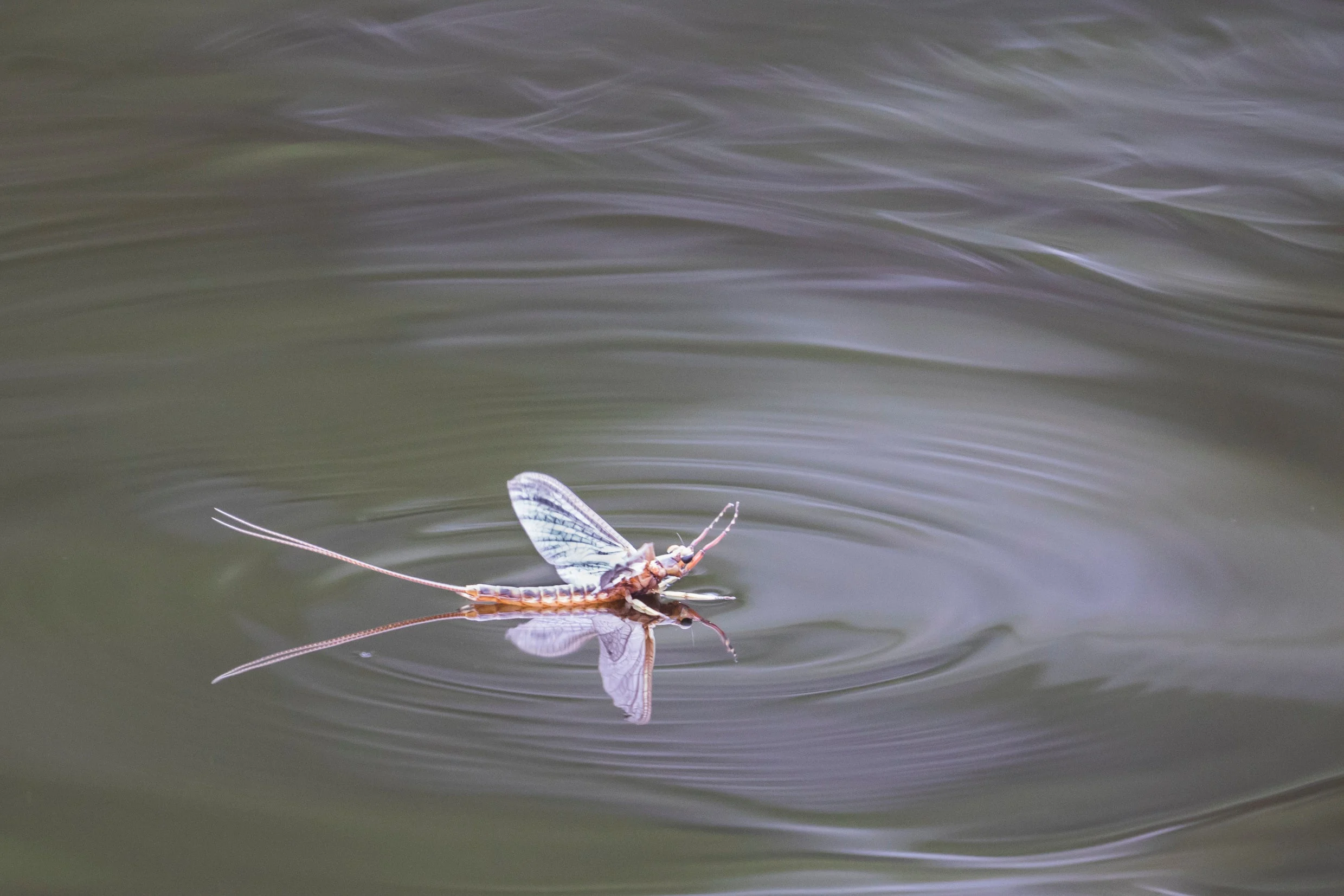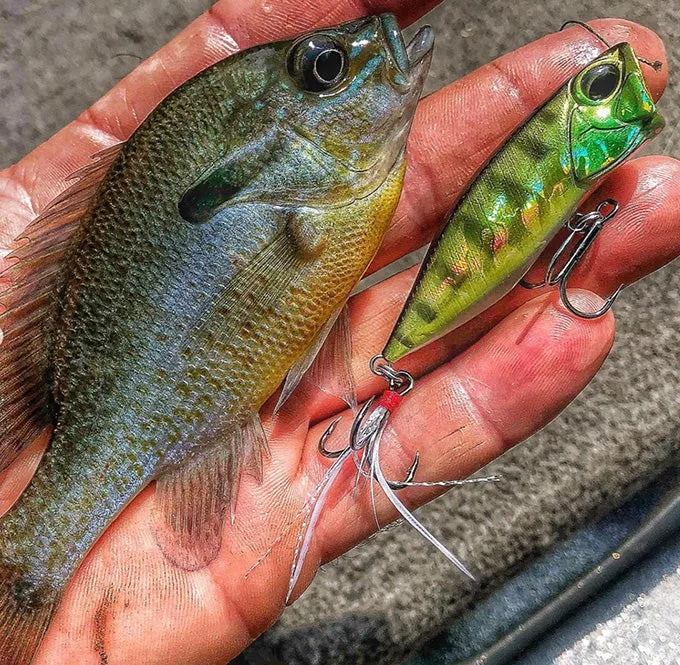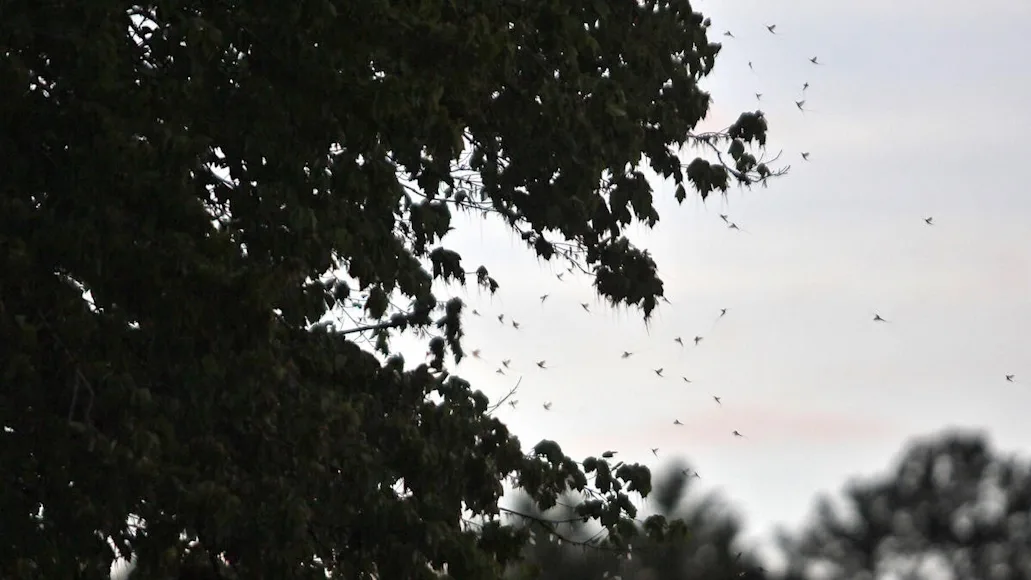Targeting bass during a mayfly hatch is a great way to generate big bites in the summer months. Starting in May and running through September, mayflies emerge all across North America. Usually associated with trout and fly fishing, mayfly hatches are also great for targeting bass
. These bugs draw in largemouth, smallmouth
, and spotted bass
that feed on the flies themselves, as well as other smaller fish eating the bugs.
This domino effect creates somewhat of a feeding frenzy across the whole food chain, resulting in exciting and aggressive bass action. I wait all year for the mayfly hatch to get going here in Alabama. Many of my biggest summertime bass
have come as a direct result of throwing a bait into the middle of a mayfly swarm. But the windows are usually tight, as the adult flies live only a couple of days at best.
Timing these hatches just right is the most difficult part of the process. But once you key in on the bugs, specific tactics and baits can significantly increase success. Below is a quick guide to mayfly basics, hatch timing and location, and mayfly fishing tips.

Mayflies are easily identified by their long tails and verticle wings over their backs. sbthegreenman/Adobe Stock
What is a Mayfly Hatch?
Mayflies live most of their lives underwater as nymphs. These nymphs start off as eggs laid by adult flies from the former generation. The female adults lay their eggs on the water’s surface. The eggs sink to the bottom, where they hatch into nymphs that live up to two years. Then, in one magnificent spectacle, thousands of these nymphs make their way to the surface and emerge as “Dun”, shedding their skin and letting their wings unfurl. The fully-formed adult fly, or “Spinner”, comes next.
Massive swarms of male and female spinners mate in midair, and then the females return to the water’s surface to lay their eggs. They shortly expire thereafter, thus completing the lifecycle once again.
When and Where to Look
Mayflies only hatch in warmer water, so don’t go looking for them in the fall, winter, or early spring. But as spring fades into summer, you’ll want to be on the lookout for one of these hatches. The exact location of a mayfly hatch can be hard to determine, as the water temperature, bottom composition, and current can all play a factor. Once you find a location of a hatch, you can come back to that same spot year after year to take advantage of the new flies emerging from last year’s eggs.
There are often several mayfly hatches throughout the summer, as opposed to one big hatch each year like you see with some other insects
. These big hatches last for a day or two at best, so they can be hard to time for anglers only fishing on the weekends. If you can get out on the water every couple of days, even for just an hour or two at a time, you can up your chances of locating a few hotspots where flies hatch year after year.
My dad and I are still fishing mayfly hatches in the same areas where he first found them decades ago. Year in and year out, these bugs pop up out of the water by the thousands along the same stretches of bank—some concentrations within the same few yards every single year. Though there are some fisheries with miles of shoreline covered in mayflies. Wilson and Wheeler Lakes along the Tennessee River come to mind, as I’ve experienced what I consider to be too much of a good thing. The beauty of an isolated mayfly hatch is that it creates a concentration of bass in one tight area. When these hatches are widespread, the bass spread out as well. You want to find smaller hatches if you can.

Various species of bream feeding on mayflies are prime targets for hungry bass. Shaye Baker
Target Bass with Panfish Imitations
Though some bass do feed on mayflies, the biggest ones are focused on the smaller fish that are feeding on the flies. Bluegill
, crappie
, and other small predatory fish gorge themselves on flies sitting on the surface. While these fish are otherwise occupied, the bass below are looking to ambush the distracted panfish.
This makes topwater lures some of the best baits you can use to target bass around a mayfly hatch. Buzzbaits, Whopper Ploppers, and Spooks all work well. But the best topwaters for this style of fishing have a stop-and-go, popping action. Small poppers and popping frogs
mimic bream feeding on the flies better than any other bait on the market.
Two of my favorite lures for this style of fishing are the Monsterbass Mad Max Popper
and the SPRO Dean Rojas Bronzeye Poppin’ Frog 60
. Both of these lures have a good chug to them and look just like a bream eating a mayfly. The stop-and-go action of these baits give the bass time to locate them in the chaos of the feeding frenzy. And the hookup ratios of each are solid.
I prefer the frog when fishing around grass and other heavy cover, or when wanting to skip my bait under bushes. The popper works really well when fishing in open water or around isolated cover. Poppers are also more effective in clearer water, especially if it has a feathered tail, as the Mad Max does. This little feathered tail looks like a fly to a bass, and it’s just enough to fool some of the more finicky fish into biting.
Other baits that mimic baitfish beneath the surface work well, too, like spinnerbaits
, and squarebill crankbaits
. Something worked slowly along the bottom, like a shakyhead or a Texas-rigged worm
, can be great as well. Sometimes, these fish overindulge and become a bit lethargic as they try to swallow and digest meal after meal. An aggressive topwater on the surface may lose its appeal, but a slow-moving worm along the bottom is a little too easy to pass up, even for these more sluggish fish.
Prolong The Bite
These flies are most active in low light, so dawn and dusk are the best times to fish mayfly hatches. During these short windows, you can catch dozens of quality bass. And then, just like you flipped a light switch, the flies return to cover like docks and bushes, and the feeding frenzy stops.
Sometimes, you can reignite the bass by throwing a bait into bush to knock some of the flies into the water, where the waiting bream explode on them. This helps triggers the domino effect and the whole thing starts over for a few seconds. Doing this over and over is a good way to prolong a mayfly hatch bite.
It’s also a good idea to rotate through a few different hotspots in the same area. Letting a spot rest for an hour or two and then returning to it is a great way to continually reignite a school of bass and bream that are waiting patiently for flies to hit the surface. Plus, new bass are constantly stumbling onto these hotbeds of activity as well, so returning to them several times throughout the day will give you a shot at fresh fish.
Start Fishing the Mayfly Hatch This Year
If you’ve never fished a mayfly hatch, you’re missing out. I had the luxury of being exposed to this pattern as a young kid and it’s one of the most exciting bites I’ve ever experienced. Look for these hatches during the summer months and focus most of your search on slack, shallow water. But don’t rule out deep or swift water without sampling it from time to time.
Once you find the bugs, use topwaters to catch the aggressive fish and slower-moving worms to pick the spot clean. It’s a good idea too to rotate through a few other subsurface baits to keep the fish honest, like spinnerbaits and squarebills. Make the most of the early and late feeding windows, and then do whatever you can to reignite the fish as the bite slows. If you time the hatch right, you’ll experience one of the best and most underrated bites in bass fishing.


